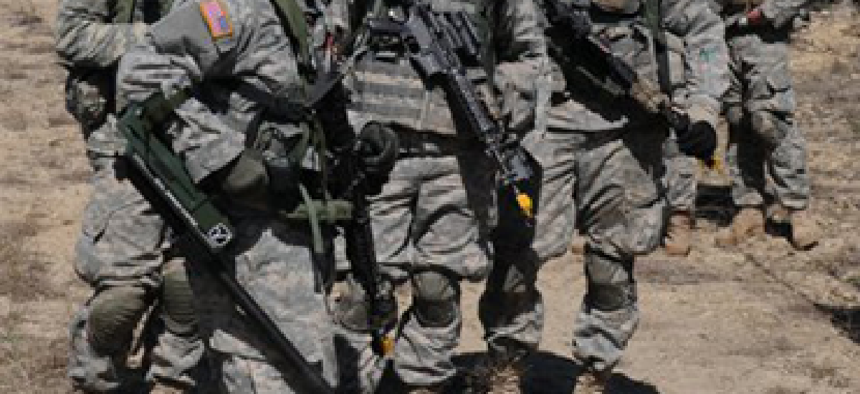Between the cracks: From Fort Hood to the Navy Yard

Progress has been made on information-sharing, officials say, but 'obviously, we're not there fully.'

Soldiers train at Fort Hood, Texas. (Army photo)
The Sept. 16 shooting at the Washington Navy Yard conjured painful memories of another recent case of violence at a military post: the 2009 attack at Fort Hood, Texas. As the investigation into the Navy Yard incident ramps up, some are looking to the findings in the post-Fort Hood reviews to see what role they now play.
Defense Department reviews of the Fort Hood shooting, directed by then-Defense Secretary Robert Gates, yielded 79 recommendations aimed at preventing such a scene from happening again, plus another 10 from the Defense Science Board. Now officials say that the majority of those recommendations have been implemented and that they did make a difference in the Navy Yard shooting.
"In the area of response, there's a few very specific things that I believe helped save lives as a result and led to a faster response time, greater cooperation between local law enforcement, with the FBI, and in terms of warning people that were on the Navy Yard at the time," a senior defense official said in a Sept. 18 background Pentagon briefing. "There are agreements that we have since Fort Hood on information-sharing with the FBI and local law enforcement...there's the ability to share that information that did not exist before. So I think we're actually in a significantly better place. Obviously, we're not there fully...based on Monday's events, but there has been a lot of progress."
The events at the Navy Yard serve as a chilling illustration that many gaps between agencies, systems and processes remain when it comes to reporting and information-sharing. For example, clearances can go as long as 10 years without re-investigation, with few concrete measures in place to address offenses that crop up during those intervals.
"That continuing part that happens after the initial clearance is getting a lot of attention. No one will investigate you for [five or 10] years, and a lot can go wrong in that time, as we've seen [with alleged Navy Yard shooter Aaron Alexis] and with cases like Bradley Manning," said John Fitzpatrick, director of the Information Security Oversight Office at the National Archives and Records Administration. "The government is trying to figure out mechanisms where it can know sooner if, say, someone fires a gun into his upstairs neighbor's floor through the ceiling."
There is also little in the way of standardization for nationwide reporting of incidents and sharing of relevant information – such as the past arrests in the case of Alexis that might have raised a warning for his security clearance.
According to defense officials, there are efforts in place to improve the kind of information-sharing necessary to identify and properly distribute red-flag data. Specifically, there are two key initiatives between DOD and other government agencies.
"One is, [DOD] and the FBI signed an agreement, a memorandum of understanding, by which if either organization has information about a threat to DOD personnel or a threat from DOD personnel...we are obligated to share with each other," the official said. "The second area I would mention is [DOD] has individuals working in a significant number of the FBI-led Joint Terrorism Task Force, JTTFs. And that gives DOD personnel insight and awareness of the cases and how they might be relevant to safety [and] security for DOD."
Additionally, DOD is in the early stages of an initiative targeting continuous evaluation, in which information – arrests, for example – would automatically be pushed to the proper authorities as it is made available. It is the automated aspect of a three-pronged reporting approach that is critical to clearance decision-making, an approach that also includes self-reporting and the responsibility of supervisors and commanders to report suspicious behavior or derogatory information.
"The problem we have is that there is no consistent, across-the-board mechanism for recording arrests and convictions across the country. We have sort of a discrepancy in terms of data that's available, about arrests and convictions," the defense official said, adding that the continuous evaluation process would result in automated records-checking and sharing. "This is in the developmental stages. But clearly, the opportunity to use automated records, to get relevant information, is something that we are pursuing."
NEXT STORY: What Your Agency May Look Like in 2020





